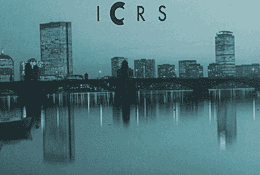|
HOJ HOME | Chiefs
Reports | Osgood
Day | Cartilage
Regeneration and Repair, Where Are We? A Harvard Orthopaedic Presence in China | Scientific Articles | Alumni |
 visit our website at: www.safamordanek.com | click here to view full page ad |
|
Cartilage
Regeneration Geoffrey
B. Higgs, MD •
Arthur L. Boland, MD |
|
|
|
The treatment of hyaline cartilage injury and degeneration is a challenge for orthopaedic surgeons. Hyaline cartilage pathology accounts for a large portion of office practice and operative procedures, but treatment remains unpredictable. The actual regeneration of hyaline cartilage is probably beyond our current reach. Ideally, the treatment of articular surface defects should be based on sound basic science principles and well performed clinical studies. With this goal in mind, the International Cartilage Repair Society (ICRS) was formed to encourage and facilitate communication and collaboration among international investigators interested in the treatment of articular surface degeneration. |
The society is unusual in that it includes equal representation from both practicing orthopaedic surgeons as well as laboratory researchers interested in hyaline cartilage. The presidency alternates between clinical and laboratory representatives.
Under the direction of faculty from the Harvard Combined Orthopaedic Program and the Massachusetts Institute of Technology, including Drs. Arthur Boland, Jim Herndon, Tom Minas, Myron Spector, and Alan Grodzinsky, the ICRS convened in Boston, from November 16 to 18, 1998 for its Second International Symposium. The meeting provided a forum for discussion of the basic science of cartilage repair and the results of treatment of cartilage injury. The format included podium and poster presentations, symposia, and live surgical demonstrations, with ample time for discussion.
This article
is a review of the proceedings of the ICRS in the context of currently
accepted diagnosis and treatment alternatives for articular cartilage
injury, degeneration, and repair. A large number of individuals and institutions
made significant contributions to the conference and this short review
cannot adequately recognize more than a small number of them. Based upon
the data presented at the symposium, one reasonable treatment algorithm
for hyaline cartilage injury and degeneration will be presented.
Background
The meeting kicked off with the presentation of ICRS honorary memberships to three of the greatest contributors to articular cartilage research: Drs. Robert Salter, Henry Mankin, and Clement Sledge. Dr. Joseph Buckwalter from the University of Iowa presented a comprehensive overview of hyaline cartilage injury, degeneration, and repair. Chondral injuries tend to vary with age and respond differently to treatment. The etiology of focal articular surface defects is debated. Acute trauma, repetitive micro-trauma, and interruption of blood supply (osteonecrosis) have all been considered as possible causative factors. We also need to clarify the natural history of these lesions. It remains unclear which lesions will cause symptoms and which will progress.
Patients less than 20 years of age tend to have osteochondral lesions; patients aged 20 to 40 years develop chondral lesions; and older patients develop degenerative chondral pathology. Dr. Buckwalter's list of operative treatment options for hyaline cartilage injury currently utilized by orthopaedic surgeons included microfracture, chondral abrasionplasty, osteochondral autograft transplantation (OATS or mosaicplasty), autologous chondrocyte implantation (ACI), fresh or frozen osteochondral allografts, autologous perichondral or periosteal transplantation, and transplantation of bioabsorbable or non-bioabsorbable matrices. Emphasis was placed upon the need to correct any mechanical axis deviation or articular instability. If these abnormalities are not addressed, the chosen cartilage procedure is destined to fail. The ultimate alternative is, of course, partial or total replacement of the joint with a prosthesis.
Dr. Buckwalter commented on the limitations of both basic science and clinical research efforts. Experiments performed in animals may help us to better understand the composition and the structural and biomechanical properties of the articular surface; however, the animal model cannot precisely mimic the variability of chondral lesions and the unique anatomy and loading conditions encountered in humans. Experimental models for focal cartilage defects have been more easily produced than models for degenerative articular surface injury. Degenerative lesions tend to be diffuse, variegated, and associated with more generalized cartilage degeneration. Furthermore, it is very difficult to account for the variability encountered in human patients with regard to the origin of the problem, the stability of the knee, genetic predisposition, mechanical alignment, and overall activity level.
The results of operative treatments for chondral lesions will be measured largely in terms of subjective factors, at least in the short term. There is no good means of physically examining or objectively measuring the quality of reparative articular tissues on a routine basis. Therefore, experimental trials in humans must include objective measurement of patient oriented factors such as daily function, pain, and return to work or sport in addition to the traditional objective measurement of range of motion, stability, and alignment.
The short-term success of a procedure does not necessarily equate with long-term repair. The reparative tissue produced after most cartilage repair techniques can appear normal grossly and even under light microscopy, but cannot withstand the demands required of an articular surface and quickly degenerate. As Dr. Buckwalter noted, the cells appear to produce the correct components, but they can't seem to put them together correctly to produce hyaline cartilage.
NEXT PAGE | TOP OF PAGE | HOJ HOME
